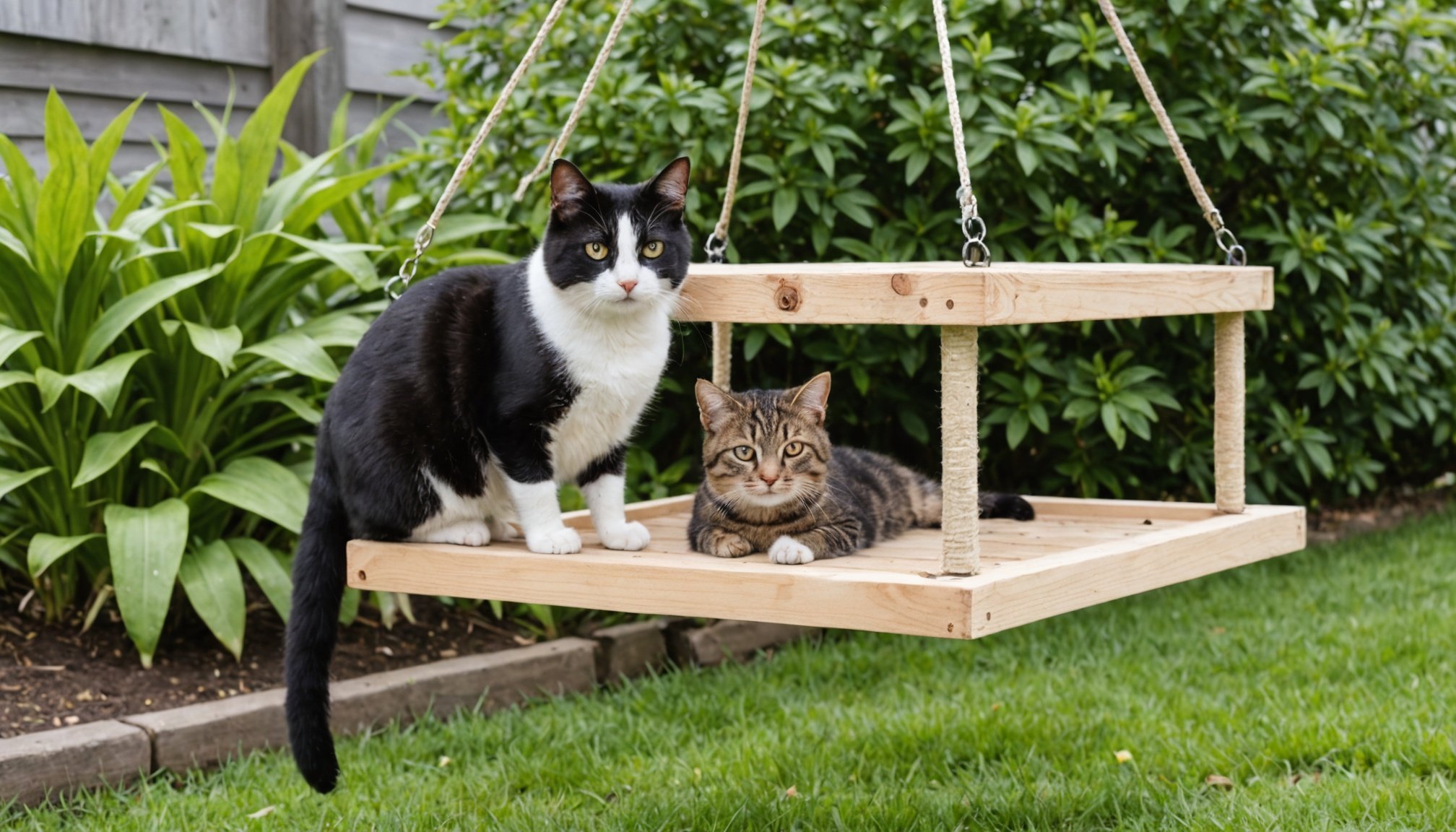Cats are naturally curious creatures, and many owners want to allow their feline friends to explore the great outdoors. However, outdoor environments are rife with dangers that can threaten your cat’s safety and well-being. From traffic to toxic plants, providing outdoor enrichment safely requires careful planning and consideration. In this guide, we will explore practical strategies and tools you can employ to create a safe outdoor experience for your cat while minimizing potential hazards.
Understanding the Risks of Outdoor Enrichment
To effectively create a safe outdoor environment for your cat, it’s essential to first understand the risks associated with outdoor activities. Cats face numerous dangers outside, including cars, aggressive animals, and exposure to diseases. They may also encounter harmful substances, such as chemicals used in pesticides or common household plants that can be toxic when ingested.
Additional reading : What should I consider when planning a vacation that involves my cat’s care?
Traffic is one of the most significant hazards. Cats are often drawn to the enticing sights, sounds, and scents of the outside world, which can lead them into busy streets where they are at risk of being hit by vehicles. Additionally, other animals can pose a threat. Whether it’s a neighborhood dog or wild animals like coyotes, your cat could find itself in a perilous situation when roaming freely.
Furthermore, diseases are a major concern. Cats that roam outside can contract illnesses from other animals or even become infected with parasites like fleas and ticks. These health risks necessitate a proactive approach to outdoor enrichment that prioritizes safety.
In the same genre : How can I recognize and respond to my cat’s body language?
In light of these dangers, it becomes clear that outdoor enrichment must be carefully managed. Knowing how to keep your cat secure while still allowing them to enjoy the outdoors is essential for every responsible cat owner.
Creating a Secure Outdoor Space
One of the most effective ways to provide outdoor enrichment without compromising your cat’s safety is to create a secure outdoor space. Enclosed areas, such as cat patios (catios), provide an ideal solution. A catio is a contained outdoor structure that allows your cat to enjoy fresh air and natural scenery without the dangers of the open world.
When building or purchasing a catio, consider its size and design. It should be spacious enough for your cat to move around comfortably and include various features to stimulate their natural instincts. Incorporate climbing shelves, scratching posts, and comfy perches where your cat can observe their surroundings.
In addition to catios, you might consider using a harness and leash for supervised outdoor adventures. This allows you to take your cat outside while keeping them secure. When using a harness, make sure it fits properly to ensure your cat is comfortable and safe. Start by introducing the harness indoors before venturing outside, allowing your cat to get accustomed to the sensation.
Furthermore, you can also enrich your cat’s outdoor experience by providing safe toys. Interactive toys, such as feather wands or laser pointers, can engage your cat’s hunting instincts while keeping them within a secure area. Always supervise playtime to prevent any accidents.
Creating a secure outdoor space not only protects your cat but also enhances their quality of life by allowing them to experience the sights, sounds, and smells of nature.
Choosing Safe Plants and Materials
When considering outdoor enrichment for your cat, it’s crucial to be mindful of the plants and materials present in their environment. Some plants can be toxic to cats, leading to serious health issues if ingested. Researching and selecting safe plants is an essential part of creating a cat-friendly outdoor space.
Common plants that are toxic to cats include lilies, azaleas, and sago palms. It’s advisable to avoid planting these in your garden or outdoor area. Instead, consider cat-safe plants such as catnip, cat grass, and certain varieties of mint. These plants not only provide enrichment but are also safe for your pet to nibble on.
In addition to plants, be cautious about the materials you use in your outdoor setup. Some treated woods can leach chemicals that are harmful to cats. Opt for natural, untreated materials or specifically designed outdoor products that are safe for pets. Furthermore, ensure that any decorative elements in your outdoor space are non-toxic and free from small parts that could be swallowed.
Creating a cat-friendly garden allows your feline friend to explore and enjoy their surroundings safely. Be vigilant about ongoing maintenance, as new plants may be introduced into the area over time. Regularly check your outdoor space to ensure that it remains a safe haven for your cat.
Supervised Outdoor Time: The Best Approach
While providing outdoor enrichment is important, supervising your cat during their outdoor excursions is perhaps the most effective way to ensure their safety. Supervision allows you to monitor your cat’s behavior and intervene if they encounter any potential dangers. Whether they are exploring a catio, enjoying a walk on a leash, or playing in a secured yard, keeping a watchful eye is essential.
When supervising outdoor play, use this opportunity to engage with your cat. Bring along toys that encourage play and interaction. This not only keeps your cat entertained but also strengthens the bond between you and your pet. Spend time observing their behavior, noting what captures their interest. This information can help you tailor future outdoor experiences to better suit their preferences.
Another aspect of supervision is to be aware of the environment. Watch for other animals that may be roaming nearby, such as dogs, raccoons, or even stray cats. If you see any potential threats, it’s best to bring your cat inside or to a safer area until the danger has passed.
Furthermore, be mindful of the time spent outdoors. Cats can easily become overstimulated or overheated, especially on hot days. Gauge your cat’s reactions and be prepared to bring them back inside if they show signs of stress or discomfort.
Monitoring Your Cat’s Health and Behavior
Finally, monitoring your cat’s health and behavior after outdoor activities is crucial. After each outing, check for any signs of distress or health issues. This includes looking for injuries, signs of stress, or indications of illnesses such as excessive scratching or lethargy. If you notice anything unusual, consult your veterinarian promptly.
Regularly updating your cat’s vaccinations is also important, especially if they have outdoor access. Vaccinations help protect against diseases that can be contracted from other animals. Discuss your cat’s specific risk factors with your vet to determine the best vaccination schedule.
Additionally, keep an eye on your cat’s behavior. Changes in appetite, energy levels, or litter box habits can indicate underlying health issues. If your cat seems disinterested in their outdoor time or exhibits signs of anxiety when outside, it may be worth reevaluating their outdoor experiences to ensure they are comfortable and safe.
Establish ongoing communication with your veterinarian regarding your cat’s outdoor activities. They can offer tailored advice based on your cat’s health history and lifestyle, helping you make informed decisions about outdoor enrichment.
Providing your cat with outdoor enrichment is a rewarding endeavor, but it comes with responsibilities. By understanding the risks involved and taking proactive steps to create a secure environment, you can allow your feline friend to enjoy the outdoors safely. Building a catio, using harnesses, choosing safe plants, supervising outdoor time, and monitoring your cat’s health are all essential components of this process. With careful planning and consideration, you can create a safe outdoor experience that enriches your cat’s life while minimizing any hazards.









